There are times when photographs speak for themselves…
They tell a story or show behavior and with my bird and wildlife photography they also show the natural cycle of life. These images may be gruesome for some to view but they show this falcon’s natural behavior quite well.
These images were taken three days ago after I came upon a female American Kestrel that had captured a vole and had begun to ingest it. The wind was blowing from the north and she was having a difficult time eating and keeping her balance.
I photographed these images using my Nikon D300 with a Nikkor 200-400mm VR lens plus a 1.4x TC attached. These images are not baited, the bird captured the vole herself. I wish it had been a natural perch but honestly I don’t think I would have had such a clear view if she had been perched on a branch or a bush.
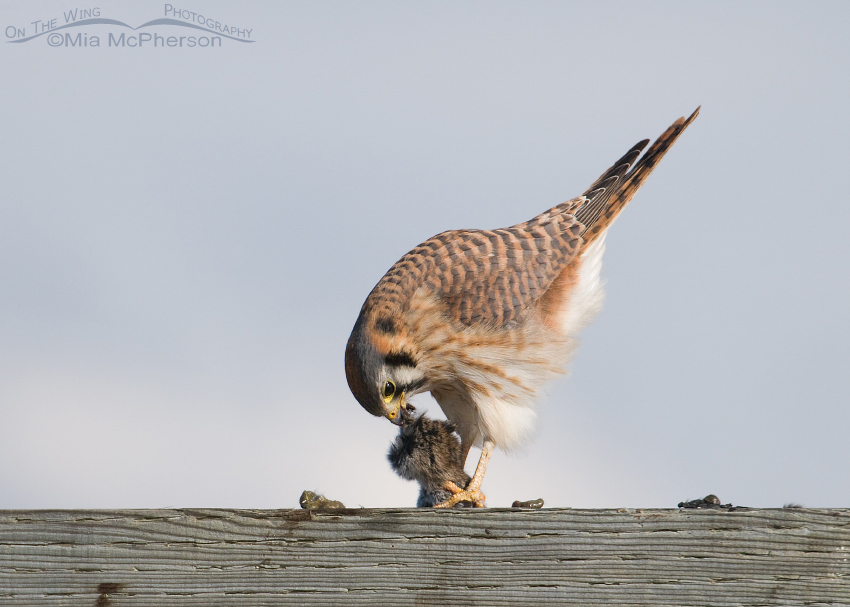
American Kestrel really tugging at the vole
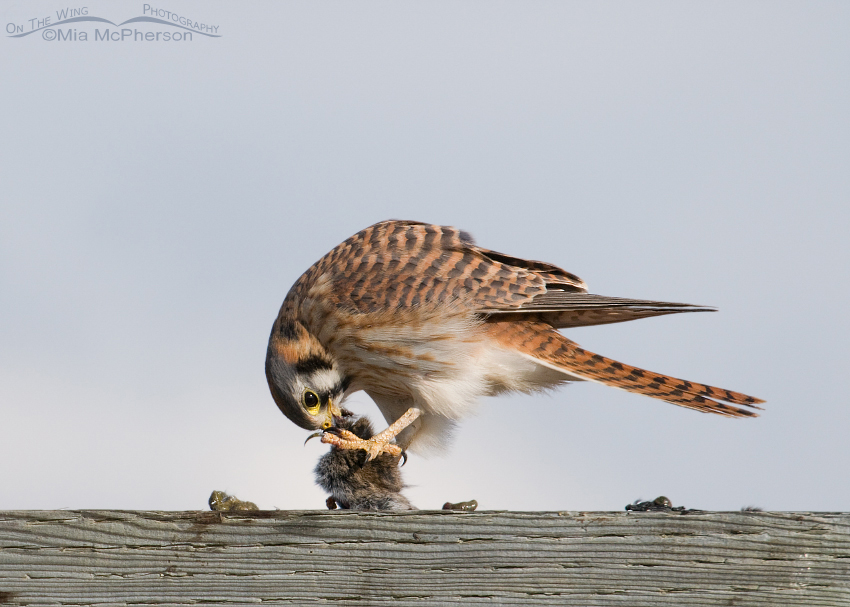
Female American Kestrel eating a vole
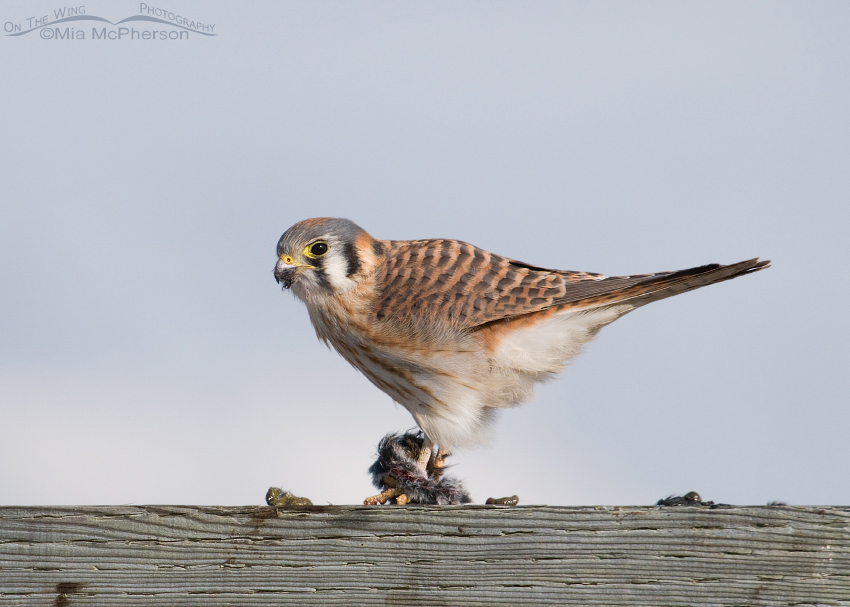
Kestrel with her prey
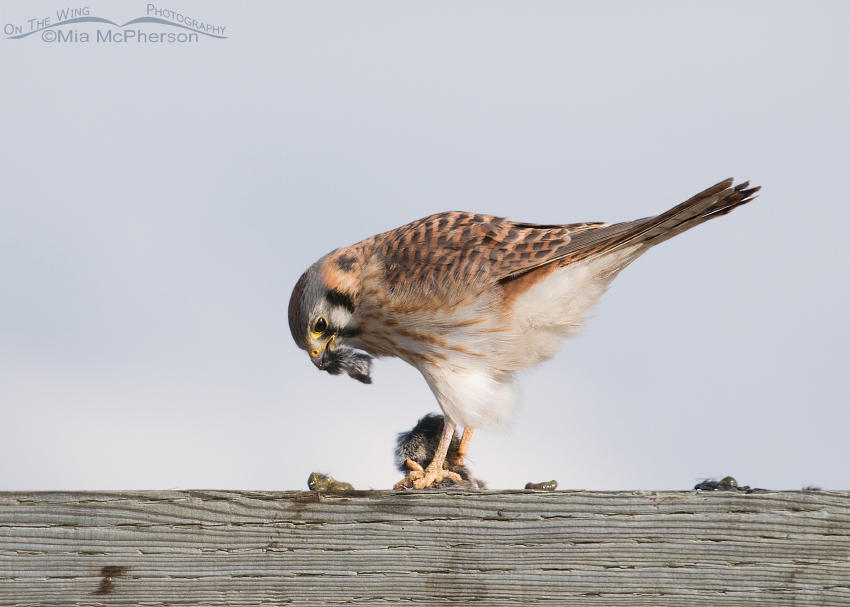
Kestrel with a beak full of prey
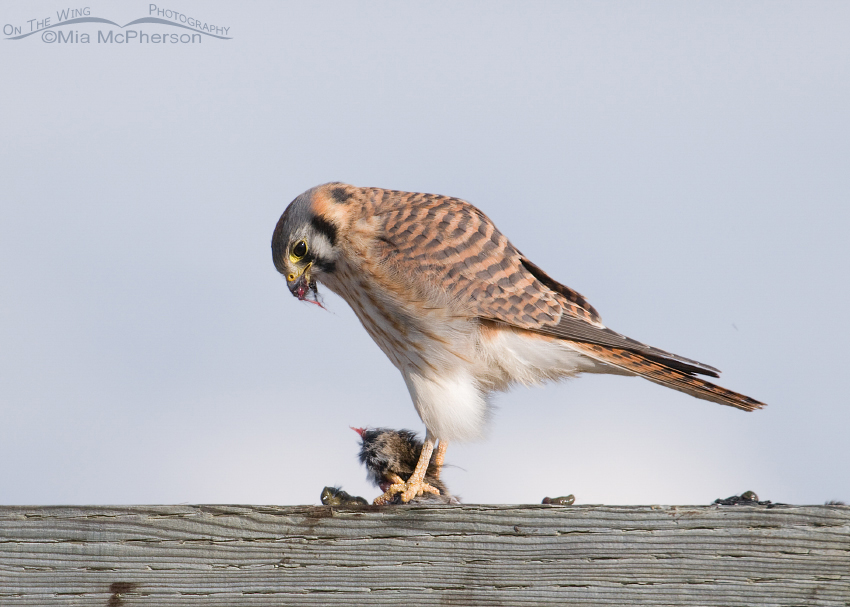
Female American Kestrel with an appetite
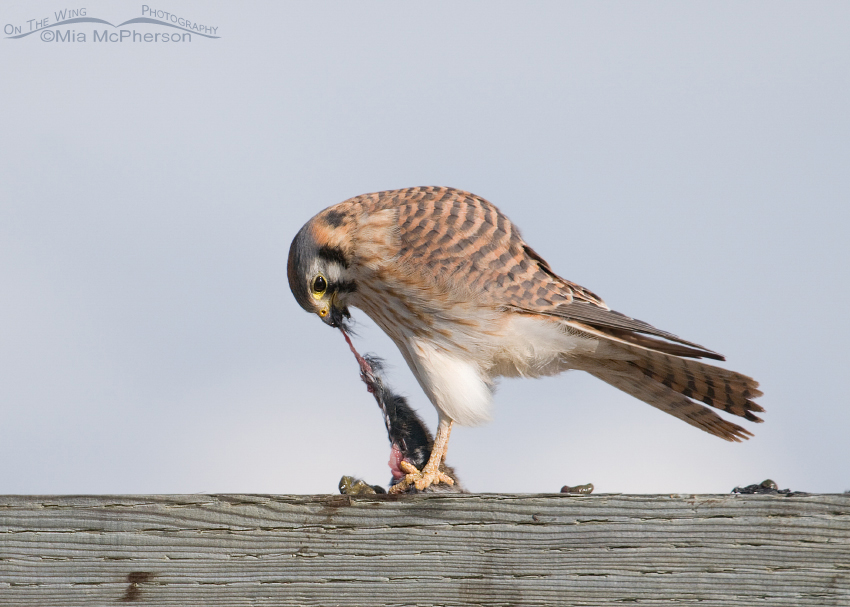
American Kestrel tugging hard at her prey
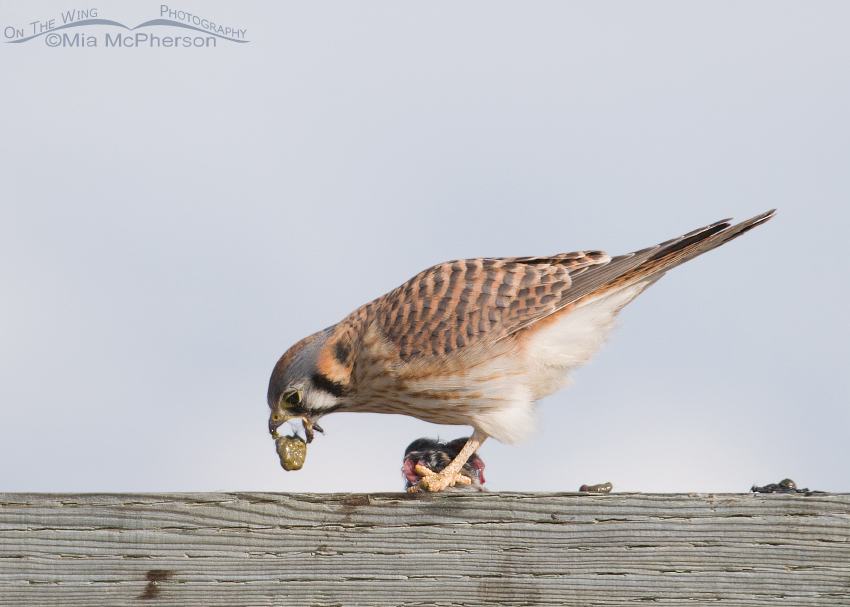
American Kestrel getting rid of the vole’s intestines
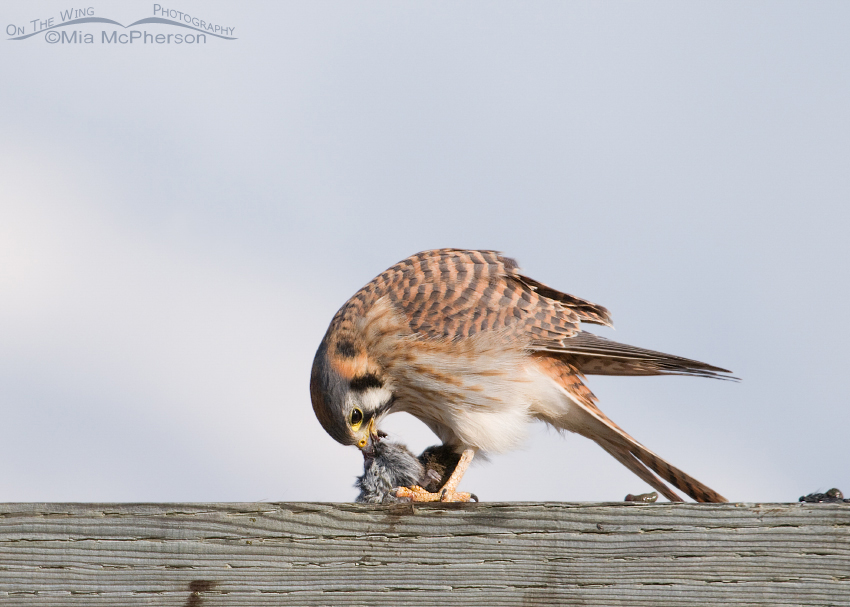
American Kestrel bending over her prey
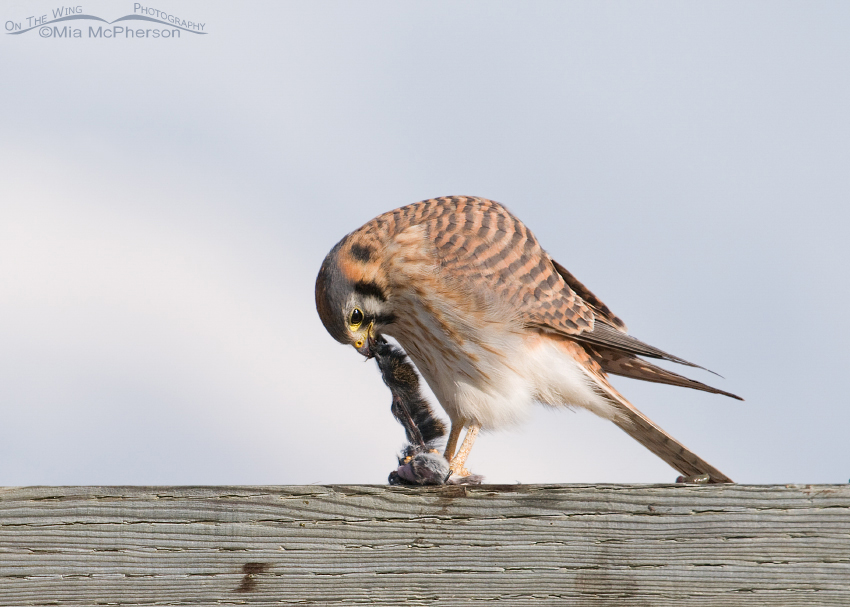
Female American Kestrel stretching our her prey
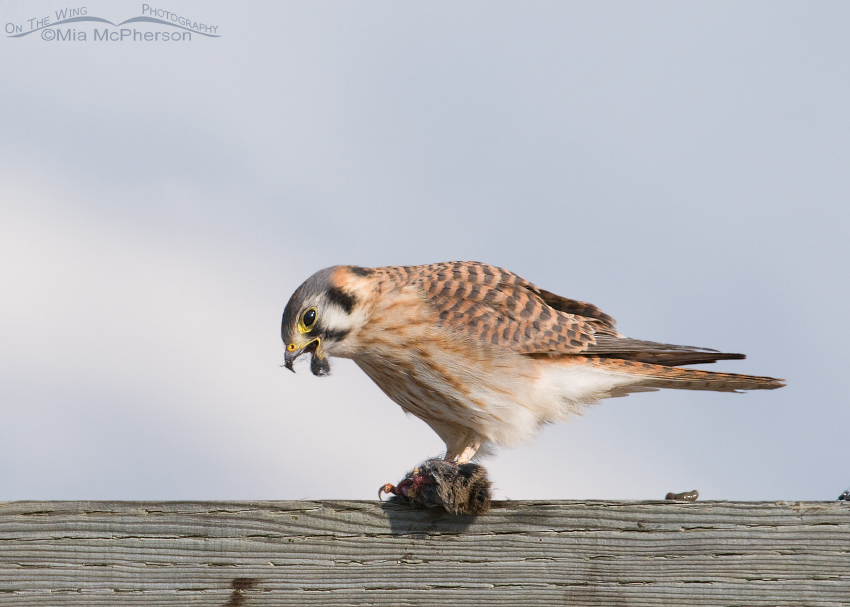
American Kestrel and her fuzzy beak
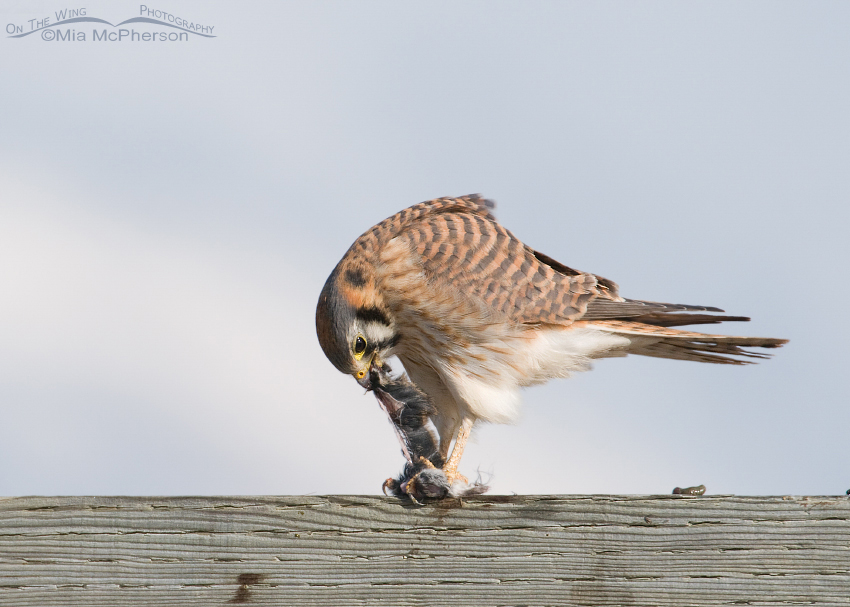
Kestrel tearing the vole
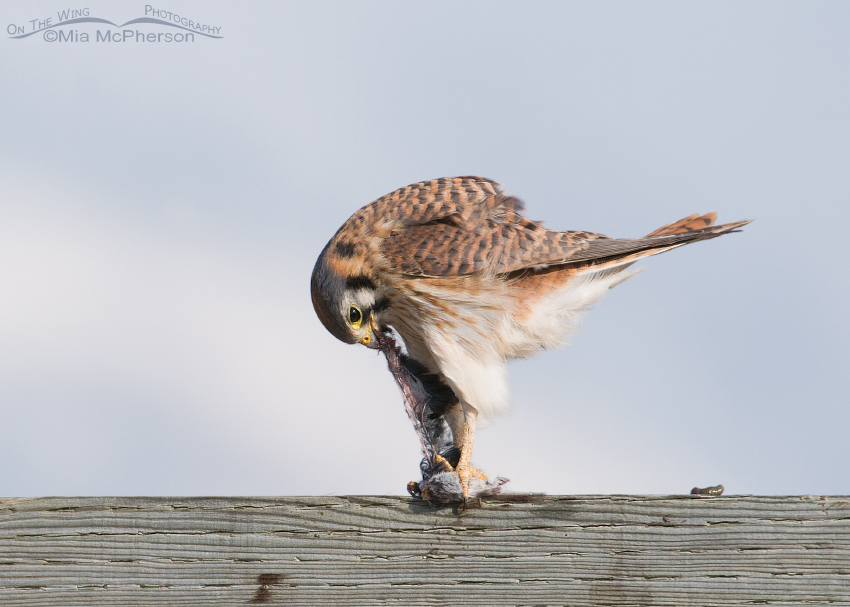
Female Kestrel putting everything into her meal
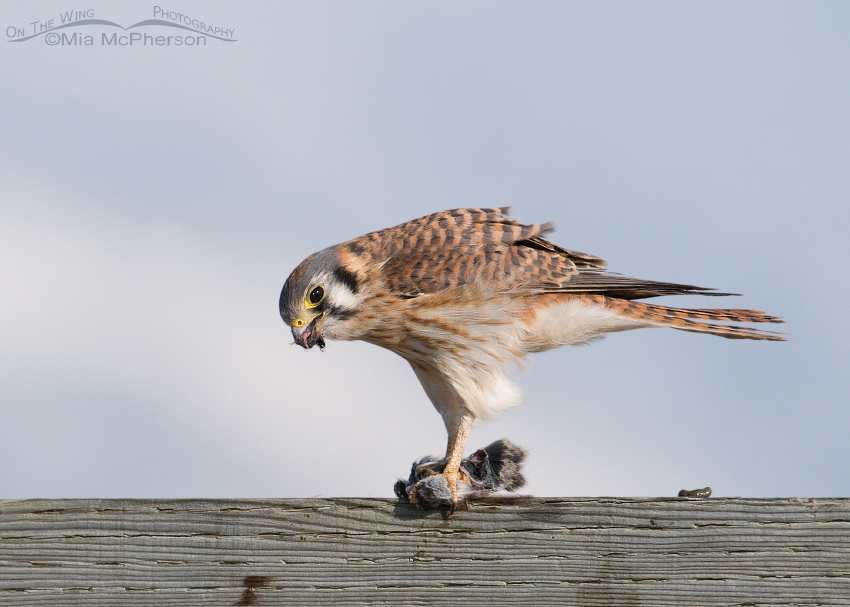
Lunch time! For an American Kestrel
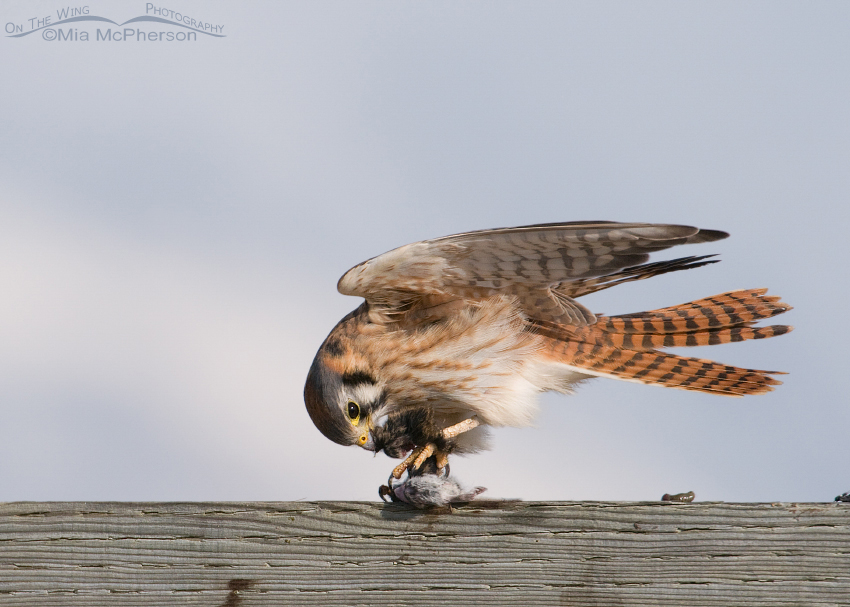
Female American Kestrel balancing in the wind
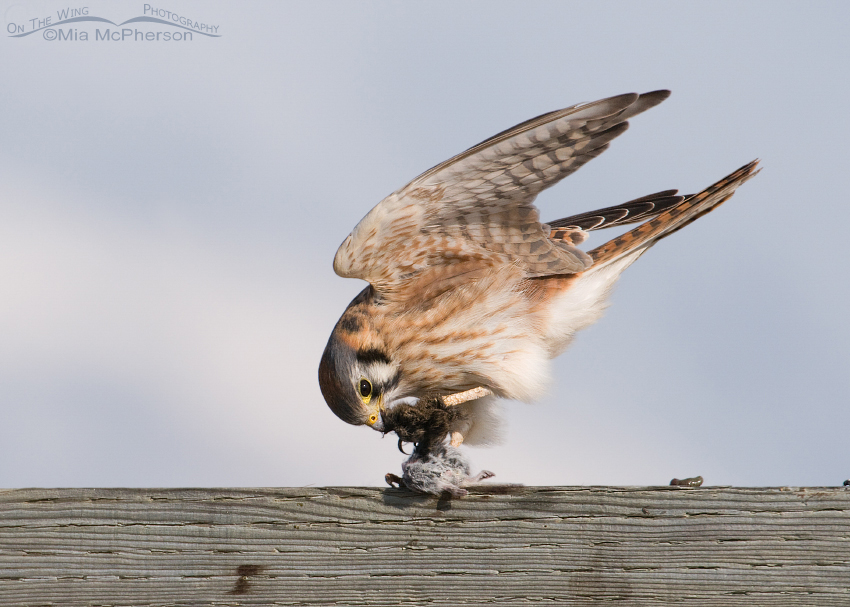
Female American Kestrel balancing while eating
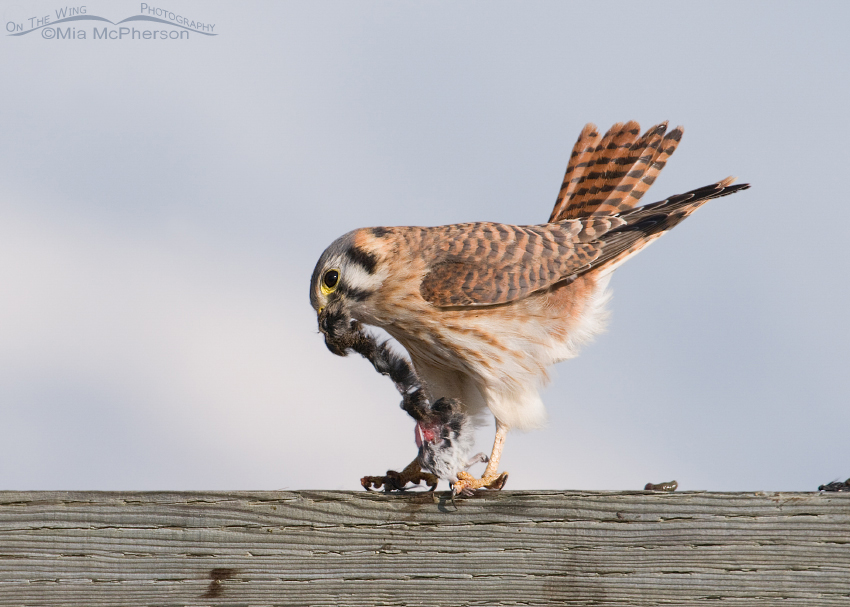
Female American Kestrel struggling in the wind
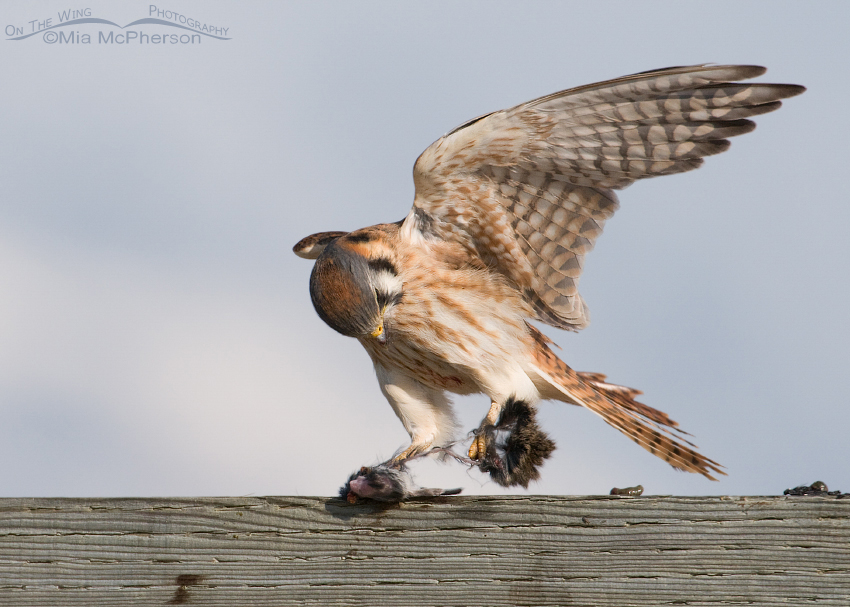
Female American Kestrel with a strong grip on her lunch
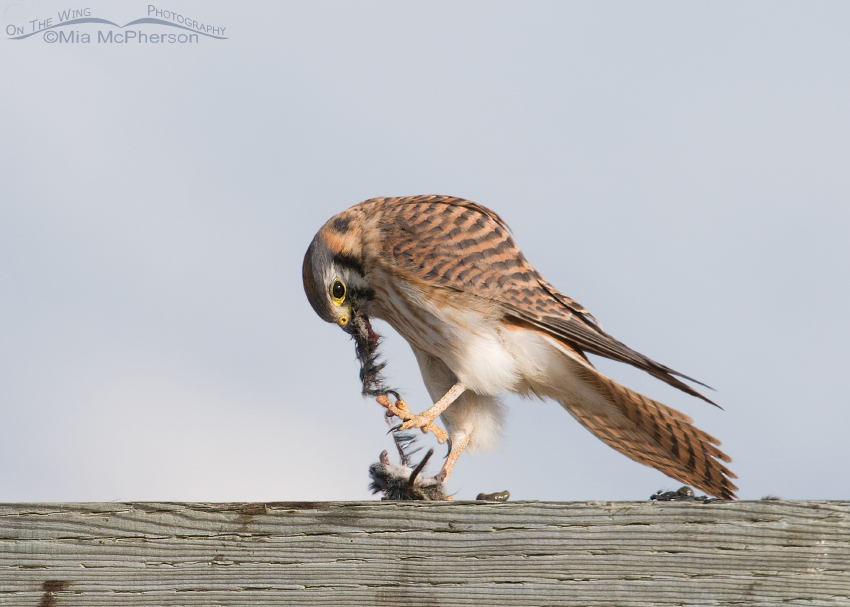
Female American Kestrel getting a grip
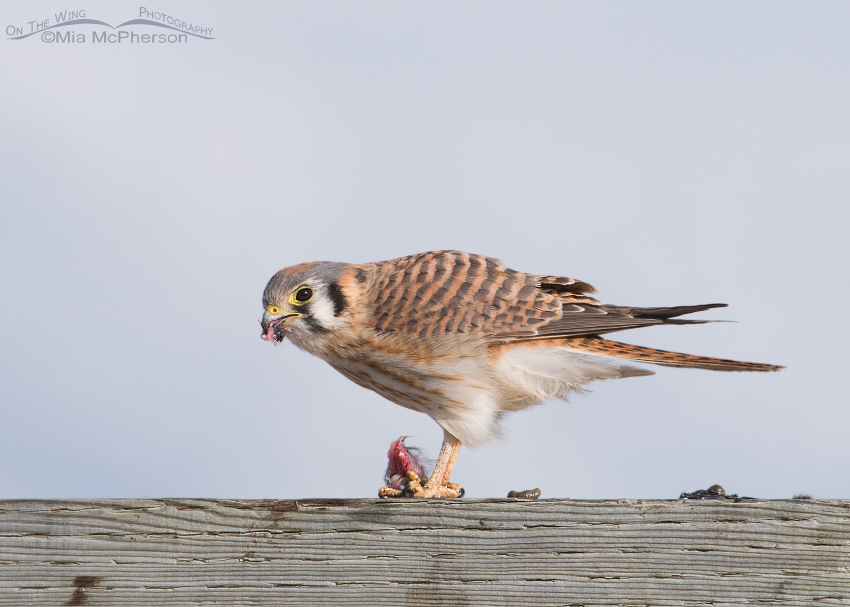
American Kestrel female downing her lunch
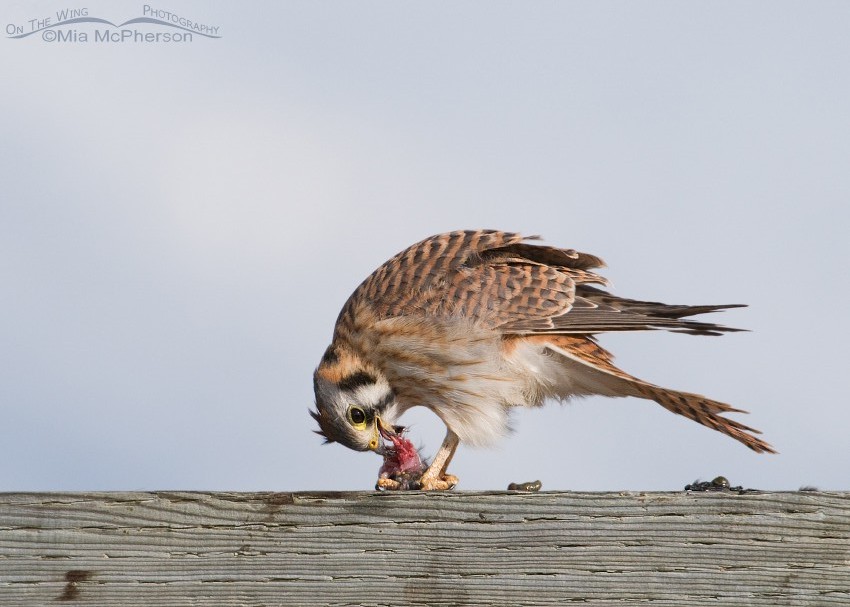
Female American Kestrel almost done with lunch
I photographed this female American Kestrel for just eight minutes and took hundreds of images, the shot above was taken near the end of the series when a vehicle came along and the small falcon picked up her prey and flew away to finish feeding on it. She struggled in the wind, she struggled to tear the meat into pieces and in the end she won the struggle.
Life is good.
Mia
Click here to see more of my American Kestrel photos plus facts and information about this species.





You have the most amazing experiences with birds, Mia. The shrike expelling the pellet was cool, and then this sequence. Viewing your images makes me feel like I am there too, almost. It also makes me want to go out and see these things for myself!
Julie, I am blessed to have so many opportunites to observe, photograph and learn about birds. I’m glad these images made you feel like you were almost there.
Superb images Mia. You have great skills in approaching the birds methinks, you get so wonderfully close.
Thanks Dan. American Kestrels are easier to approach here when it is cold, when it warms up they very challenging to get close to.
Like I told Ron on his blog, I just love these feist little beauties. Great shots, Mia.
Thank you kindly Bob, I adore these fiesty little falcons too!
Great series of captures Mia.
Thanks so much Vincent, this kestrel was great fun to photograph.
Awesome series of this beauty Mia! I really like the shot, fourth from the bottom, with her wing up, legs apart and head down. It looks like she is either trying to pull the pieces apart or get the chunk of skin and fur off her talon.
I totally agree with Ingrid’s comment and your reply about baiting birds for photo ops. “Your images are a consistent testament to the fact that great shots are possible with talent, tenacity and patience — with no compromising of wildlife ethics” and that is what it’s all about!
Thank you for your comment Larry, I really like the image you mentioned too. American Kestrels are fascinating little falcons! And thank you for addressing Ingrid’s comment and my stand on not baiting birds for photographs.
Mia, what an amazing series! I am sure that perch is “natural” for the falcon. I have seen many a kestrel or other hawks feeding atop poles of all sorts. I am glad she got to eat. I know how difficult it can be for them to hunt, especially in the wintertime. Lucky you to be in the right place at the right time!
Hi Kathie! I’m also glad the kestrel got to eat, although this winter hasn’t been as cold or as hard as most winters in Utah the birds still have to expend more calories to stay warm in the cold. Thank you very much for your comment on the images and this post!
Wow. Oh. Wow. Gorgeous photography as always. Interesting bird behavior as always. Fascinating tid-bit about the intestines being discarded. I had never thought about that before, but makes sense that birds would not eat the biggest source of harmful bacteria, etc. They just need the meat.
Robert, some raptors do ingest the intestines; for instance, Rough-legged Hawks often eat a vole whole. That may mean they can tolerate higher levels of bacteria in their digestive tracts than an American Kestrel can. Thanks much for your comment!
Wow. This is an extraordinary series, Mia. Fantastic. Very interesting to observe the Kestrel’s feeding routine. It doesn’t make for a sweet portrait but it’s a wonderful study. Your portfolio of Kestrel pictures on your blog here is awesome. Gorgeous shots!
but it’s a wonderful study. Your portfolio of Kestrel pictures on your blog here is awesome. Gorgeous shots!
Thanks so much Scott, American kestrel’s are a favorite of mine so I am always looking for opportunities to photograph them.
Fascinating and excellent images of a natural occurrence. (This was no more graphic than watching my cats eat a vole.) A couple of my favorite images that you captured above include the ejecting of the intestines and the lifting of the claw to allow the fur to blow off it.
Hello Angelyn, thanks for stopping by my blog and for taking the time to comment, I appreciate it. The female Kestrel didn’t appear to like even touching the intestines with her bill, she would lift and drop it very quickly and did that several times before it finally fell down to the ground. Thanks again for visiting!
This is a very special series. Birds blend form and function so well; there’s nothing about these pictures and the behavior they display that is not beautiful (I know, tell that to the Vole). It seems like you’ve had a lot of recent success with these carnivores, particularly with that excellent series on the Peregrine Falcon. It’s been a long time since I’ve seen a masticating raptor in the wild. Even if it’s graphic, seeing a raptor with prey is too see the bird at its finest, to see everything brought together.
Thanks so much for sharing.
Laurence, I have had good fortune so far this winter with photographing raptors with prey. Some times it has been just being in the right place at the right time and having the skills to capture it. I feel lucky to be able to witness and photograph all that I see in nature! Thanks so much for your wonderful comment on this series.
Wow! and wow again! What a fantastic series! Do they expel a pellet later, of the undgestibles, like owls do?
Mel, Kestrels do later expell a pellet of the fur and bones. I’ve yet to get good photographs of that happening. Thanks so much for you comment!
Great series Mia.:)
Thank you as always Bill or your comment!
Oh, Mia, this series is so incredible. I can’t stop looking at the clarity of the images.
btw, I am so glad you made a point to say that you don’t bait for your shots. Because your images are a consistent testament to the fact that great shots are possible with talent, tenacity and patience — with no compromising of wildlife ethics.
There’s a good photographer whose photos I see on Flickr, but who’s been called out for baiting owls with live mice. He continues to photograph this way, and never cops to the fact in his photo descriptions. Not only do I have a lot of trouble with this practice, it’s made me realize that I don’t “trust” any of his images as a result. Whenever he’s got a good shot of a bird, inside my head, I wonder what he did to get it.
Ingrid, thanks so much for commenting on these Kestrel images and for mentioning that I don’t bait birds. I won’t bait birds for an image because that goes against my own personal wildlife ethics. Not only have I heard of people using live bait but I’ve also heard of bird photographers using plastic great horned owls with feathers glued on them to bring other raptors near it to get flight shots of falcons and other raptors. I’d much rather get to know my subjects, spend time with them and get the images showing natural behavior without manipulating, baiting or harassing the subject.
Absolutely superb images Mia. Fabulous post!
Thanks Linda, the kestrel was a fabulous subject!
Very impressive photography!!
I didn’t know they didn’t eat the intestines.
Judy, thanks for the comment on these images!
Jaw-dropping images Mia. Truly outstanding. I couldn’t tell, do they eat the fur too? It appeared to almost be unraveling the vole until it had a long strip of fur (like pealing an apple!).
Thanks Kathy, the kestrel paid little attention to us as she ate. Kestrels do ingest the fur though some of it can be seen flying away as they tear at the prey. The furs and bones are later expelled as a pellet.